Typically our first spring camping trip is a shake-down cruise for the trailer to Antelope Island. If anything goes wrong with the trailer (and it sometimes does after sitting all winter) I’ll be relatively close to home. This year we spent the last two days of March on the island. Most of the photos in this post were taken on that trip.
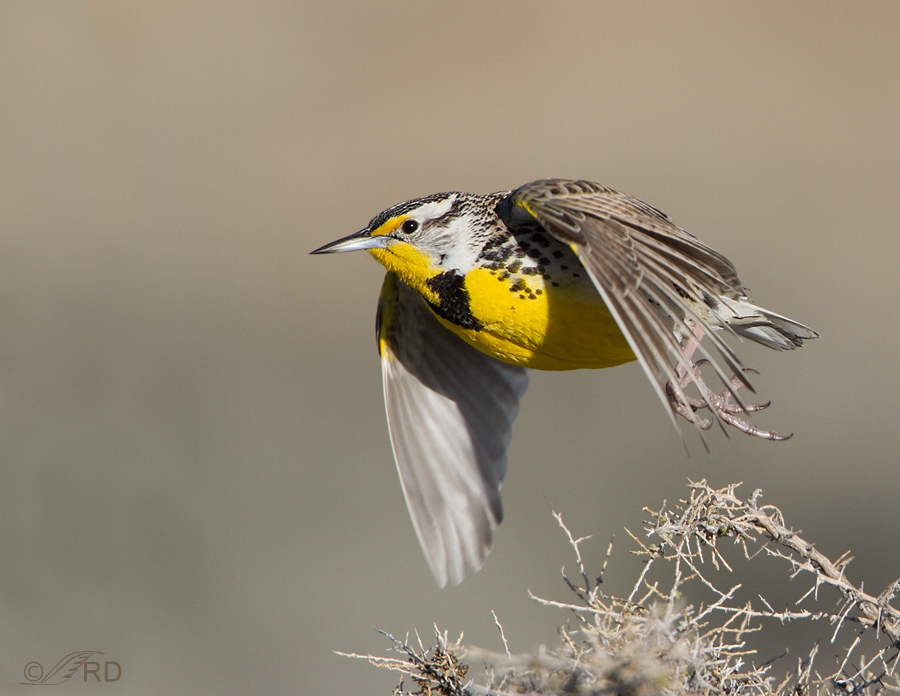
1/2500, f/6.3, ISO 500
There’s been a few Western Meadowlarks on the island for much of the winter but they’ve returned in large numbers now. In all my travels in the west I don’t think I’ve ever seen any other area with such a high concentration of this species. At times their beautiful song resonates all over the hills of the island. Meadowlarks always bring back fond memories for me of growing up on the Montana farm.
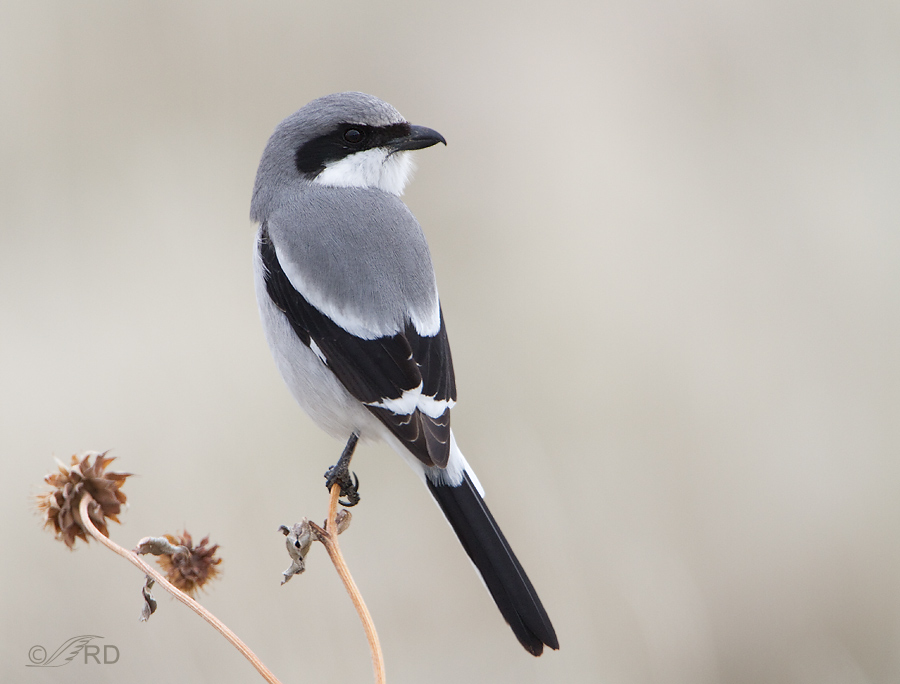
1/2500, f/6.3, ISO 500
Loggerhead Shrikes are another very common species, especially on the northern part of the island. They’ve been absent all winter but we’re seeing more of them on each visit now. It was cloudy when this image was taken and I didn’t get a lot of light in the eye but I think there’s just enough.
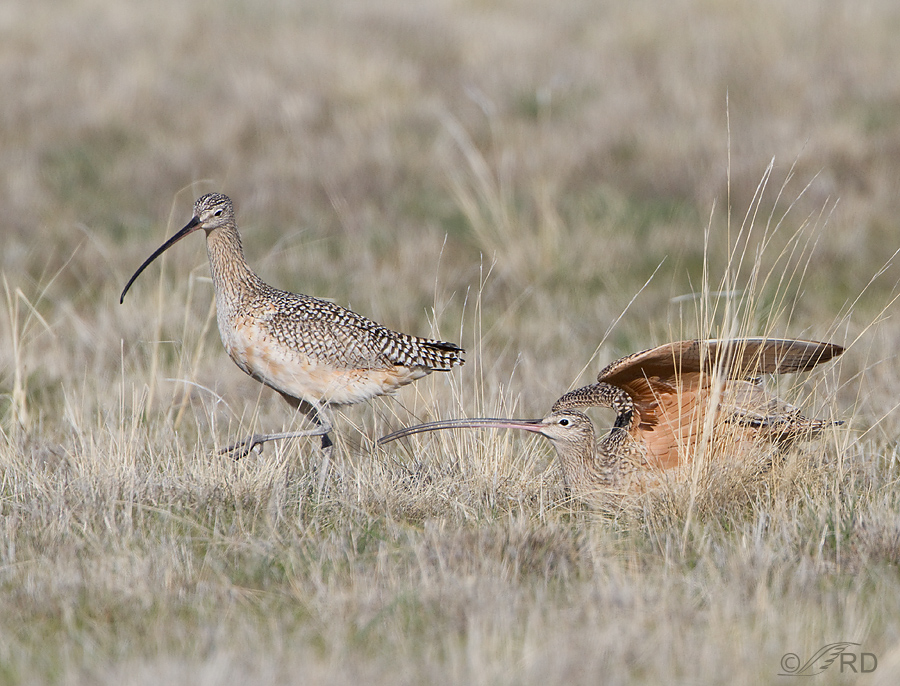
1/2500, f/7.1, ISO 500
I always look forward to the return of the Long-billed Curlews with great anticipation and they started appearing about 10 days ago. I was happy to get this shot of the male on the right displaying for the female. Male and female curlews are almost identical but they can be differentiated by their bills – the females bill is often longer than the males and they are shaped differently. The male bill is gently curved throughout its length while the female bill is flatter on top with a more dramatic curve at the tip.

1/3200, f.7.1, ISO 500
Like me, Horned Larks are creatures of habit – they return to the same perches again and again. There’s one area on the island with a group of boulders that this species regularly perches on so we always visit those boulders at least once each trip. This male even obliged us by singing.
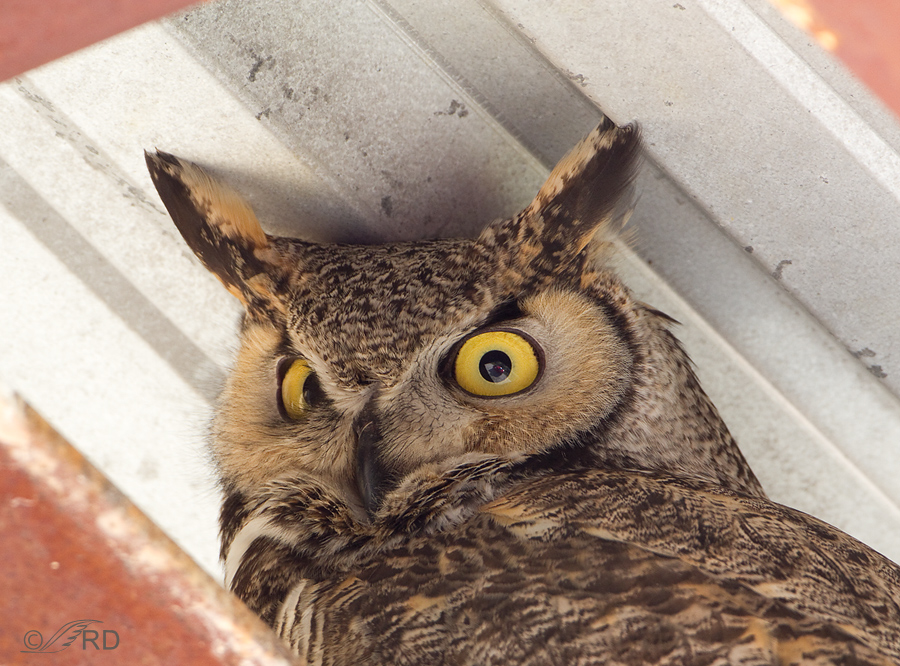
1/80, f/7.1, ISO 500
We found this Great Horned Owl spending its day near the roof of an outbuilding used for storing hay and maintenance equipment. Not a very picturesque setting but I couldn’t resist taking a portrait. I took this shot from inside my truck and you can see that red pickup in the reflection in the left eye. I’m struck by how small Utah GHO’s seem to be in comparison to the Montana owls I’m used to. Even if this is the male (males are smaller than females) he seems rather diminutive. This species is a year-round resident of the island.
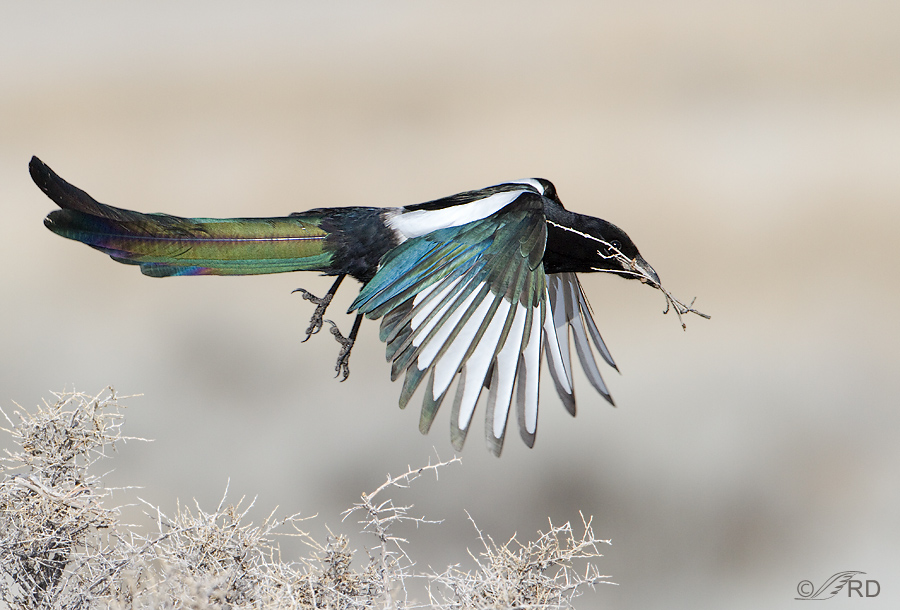
1/2000, f/7.1, ISO 500
Our Black-billed Magpie pair has been busy with nesting activities for weeks now – same nest as last year and presumably the same birds. In this shot I wish that the twig wasn’t quite so close to the eye but I like the iridescence and the cleanness of the shot.
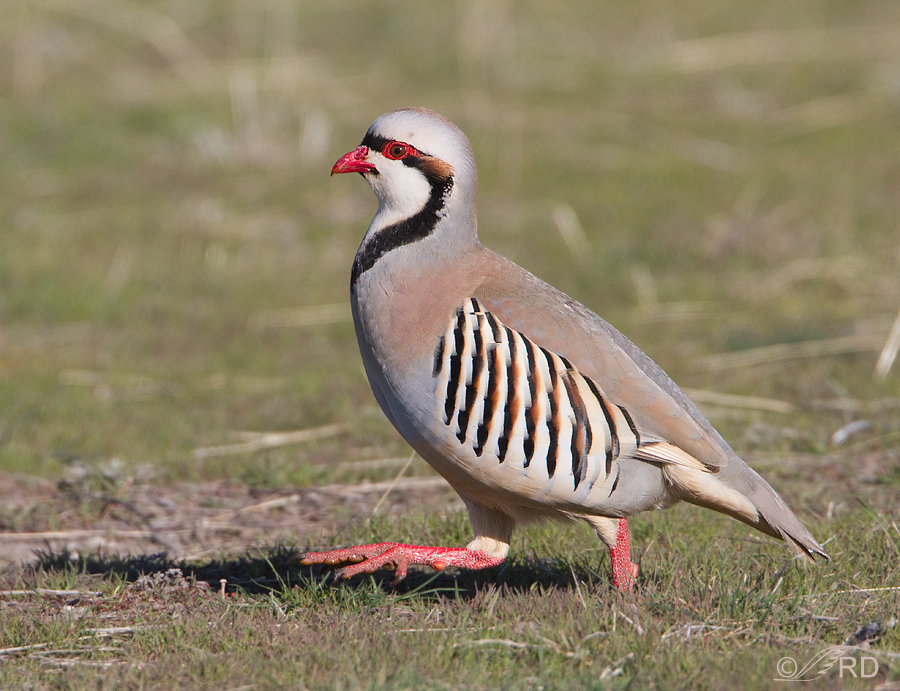
1/2500, f.7.1, ISO 500
Chukars are also year-round residents of the island but much of the year their plumage seems a bit ratty and many of the feathers (on the head especially) have a dirty look, presumably from ground feeding and possibly from dust bathing. In springtime they seem particularly handsome. In most of the images I like of this species the bird is on a rock or boulder perch because it’s very difficult to get a clear shot of them on the ground because of all the tall grasses. So I was happy to get this one in the open and on the ground.
A word of explanation – some may wonder why I so often use such high ISO settings and shutter speeds for my birds. The reason is because I’m a huge fan of action shots – take offs, flight, sudden and unexpected behaviors. So typically when I approach a bird (or they approach me) I have my camera set at high ISO’s and SS’s so the action will be sharp. If the bird cooperates for a while I’ll often dial my settings down for a few shots but I always go back up if it looks like anything interesting might happen. That’s just what seems to work for me.
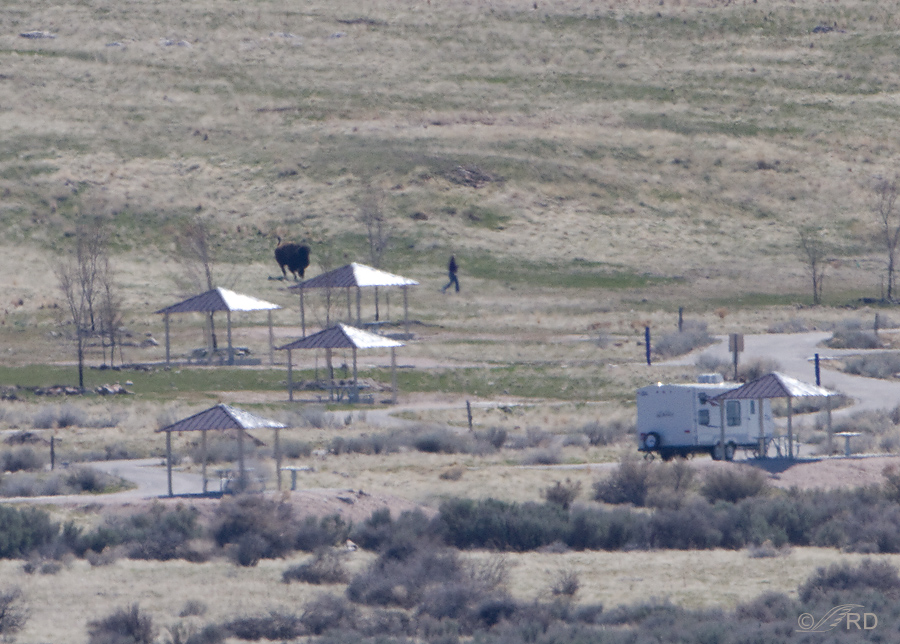
Bison charging photographer. Stupidity 1
Now for the “craziness” part of this post. While on this same camping trip a little over a week ago we were on a hill and I happened to scope the campground over a mile away with my 500mm lens with attached 1.4 teleconverter and what I saw blew my socks off. The campground was almost deserted and about a half-dozen bison were grazing their way through the camp sites. Then I saw a car stop and one guy get out and approach one of the bison with what was obviously a point and shoot camera. The bison ignored him until he got very close – perhaps 35-40 feet but then it whirled and charged the man. I was so shocked that at first I forgot to fire off any shots but after about a second I did get a few photos. In this image you can see the bison’s tail in the air as it charges and the man running toward his car out of frame to the right. This imbecile wouldn’t have had a chance but the bison quickly quit the chase when it saw that the man was no longer a threat. This occurred at 3:37 pm.
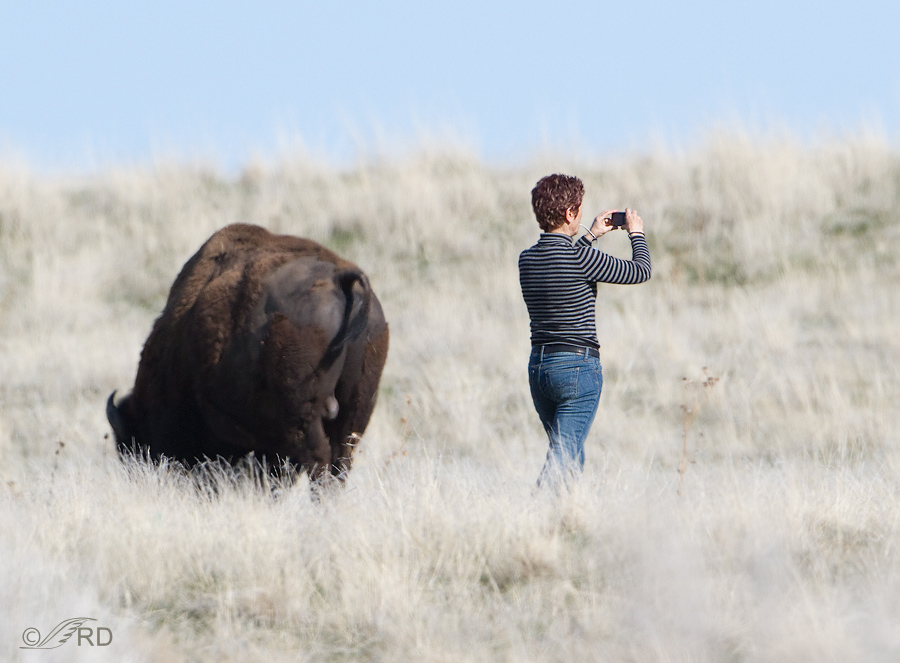
Stupidity 2
Soon we returned to the campground (in fact, that’s my camping trailer in the previous image). The bison were still on the periphery of the campground. I had my photo gear set up to shoot magpies. Soon two cars pulled up and about ten people, including small children, piled out to photograph the bison from the comparative safety of a campsite with gazebo. But then this woman started walking directly toward two of the bison. As you can see the bison in the photo is not positioned well for light but the one out of frame to the right was turned so that it had good light. So this woman walked within about 15 feet of this bull, paying him no attention, to get her point and shoot images of the second animal in better light.
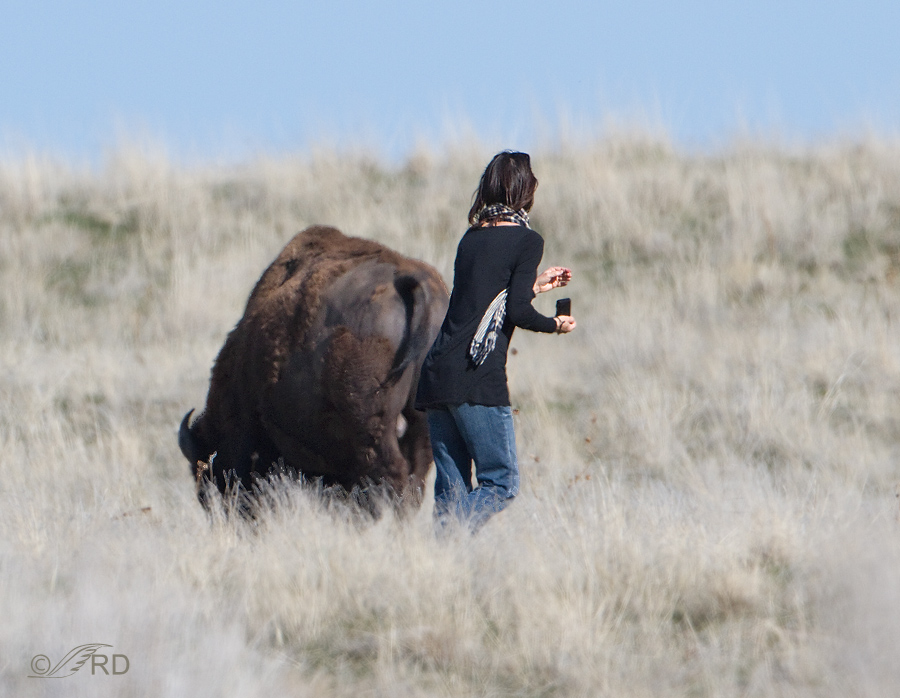
Stupidity 3
Obviously, stupidity is contagious. Within a few seconds, after she saw that the first woman had survived, her friend did the same thing! At least this second lady was paying attention to the bull – not that it would have done her any good if the animal had taken exception to her closeness and decided to charge her. Some will and some won’t – they’re very individual in how they react to people and vehicles close-up. This second incident occurred at 4:59 pm. Two (actually three) very dangerous situations within less than an hour and a half.
I was very close to all this as it went down and my heart was pounding through the whole thing. While the women were still out there I ran over to the men in their group and warned them of the danger and told them about the earlier incident. They just gave me silly grins and barely responded. I was very angry. If the bison had charged they would have been destroyed and human lives very possibly would have been lost. And my camping trip would have been ruined – yes, I’m just selfish enough to think about that too.
We almost had more candidates for the “Darwin Awards”.
Ron


I was at Antelope Island earlier this Spring and took many pictures of the bison and wildlife there. I can’t believe that people would not respect the size and looming danger of these protected animals. They have to be totally without any common sense! If the bison had charged and killed one of these people, their families and friends would be blaming the animal…..sad!
In response to those last 3 photos–AGH! People never cease to amaze with their ignorance and stupidity. It’s miraculous that more people aren’t killed each year by these animals.
On a happier note, what a nice sampling of spring species! And you once again answered one of my lingering questions. I’ve had a lot of people tell me that the taxidermied Great Horned Owl in our classroom seems small, but I wasn’t sure if it was in actuality. You’ve confirmed for me that Utah owls are, in fact, on the petite side. Thanks!